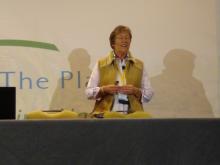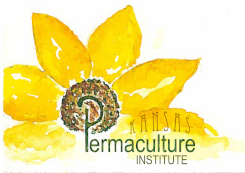By Ben Stallings |

Dr. Christine Jones at No-Till on the Plains 2019
Notes from a talk by Dr. Christine Jones at the No-Till on the Plains conference, Wichita KS, January 2019.
- The 2018 census of life on Earth estimates 550 gigatons of carbon-based life.
- 450 gigatons of that is plants.
- Of the remaining 100 gigatons, 93 are protists, archaea, and fungi, 70 gigatons just bacteria.
- The remining 7 gigatons are macroscopic animals, with humans only 0.1% of the total.
- We are embedded in a microbial world, and it is embedded in us. All species need other species to survive.
- Diversity of food directly causes a diverse and healthy microbiome.
- A diversity of plants directly causes a diverse soil microbiome, which in turn directly causes healthier plants.
- Our agriculture is so simplified, we're not even aware of how productive diverse systems are.
- American prairies used to have 500-700 species of plants alone.
- We have observed tipping points where a critical threshold is reached:
- Burleigh County Conservation District: cover crops planted individually failed, but when mixed together, they grew without stress.
- Chinook, ON same story
- South Dakota comparison of 5-species and 27-species cover crop plantings: the former failed while the latter thrived.
- Jena, Germany: diversity generated a greater yield than high nitrogen inputs. Soil carbon increased with diversity.
- Wilith Farm, New Zealand: reduced nitrate inputs and boosted soil carbon with diverse pasture. 6 inches of topsoil built in 3 years! All metrics improved.
- Quorum sensing: density-dependent coordinated behavior and gene expression.
- Bacteria can switch their own genes on and off in response to the presence of others. But they can also switch animal and plant genes on and off! So plants and animals are being actively managed by bacteria.
- Bacteria, archaea and fungi are in turn regulated by viruses.
- "auto inducers" are the chemical signals that make this happen.
- similar to how a disease suddenly comes on when germs reach a critical density.
- The majority of the genome is usually considered inactive, but quorum sensing activates it.
- Microbes working together create a microhabitat around roots to fix nitrogen.
- Plants cannot build topsoil when high-analysis fertilizer is used.
(at this point I had to leave the session and did not catch the ending.)
- Log in to post comments




